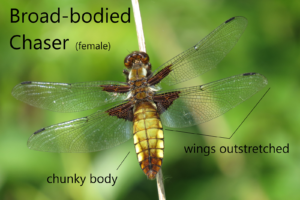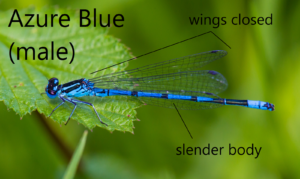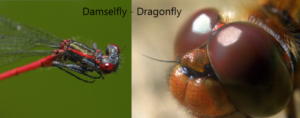Here be dragons: An introduction to Odonata
Joining as a warden back in December, there were many things I was looking forward to this summer. Adders in the purple heather, lizards out on the baking sand, and dazzling dragonflies cruising through the air. I’ve already talked about our native reptiles, and now it’s time to move on to a group, I must confess, I don’t know too much about. So, how about joining me on a journey of discovery? We’ll count down through some of Britain’s top dragonflies and damselflies over the coming weeks, and remember, the best way to learn is to get out there and start exploring!
But first let’s start with the basics. Damselflies and dragonflies belong to the insect order Odonata, meaning toothed jaws, a well-deserved name for these aerial predators. In Britain 57 species have been recorded, 21 damselflies and 36 dragonflies, ranging from the tiny small red-eyed damselfly, to the whopping golden-ringed dragonfly. They can fly backwards, up to a top speed of 35-40 km/h and they have a 95% successful hunting rate! Better predators than lions, wolves and even sharks!
Looking at these photographs you can see that there are a few key differences between damselflies (azure blue damselfly) and dragonflies (broad-bodied chaser dragonfly). Once it’s landed, have a look at the positioning of its wings. Damsels hold theirs closed and behind the body, whilst a dragon’s wings are kept open (although there are rare exceptions!), next the body. Dragonflies are generally far broader than the daintier damselflies, with a chunkier thorax and abdomen (middle and end). And this shows in their flight, with larger dragonflies having the capacity to fly at much higher speeds and heights. Lastly, if you can get a nice, close look, inspect these insects’ massive eyes – on dragonflies they take up most of the head and join at the top, whilst damselfly eyes sit on either side of the head like a hammerhead shark!
In the next few weeks I’ll be trying to find (and hopelessly photograph) these agile creatures in the wild and see how many of the 57 I can find! On a sunny, still day dragonflies and damselflies can be found in almost all habitats associated with water – even just a small ditch along a woodland path may attract them. Ponds are fantastic habitats too, so if you have the space for even a small one, you could tempt these jewels into your garden with guides from the Wildlife Trust and Happy DIY Home!
Warden Jamie



